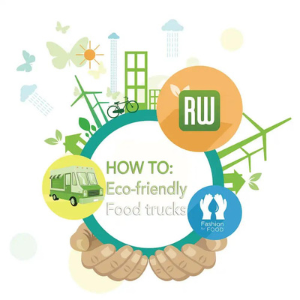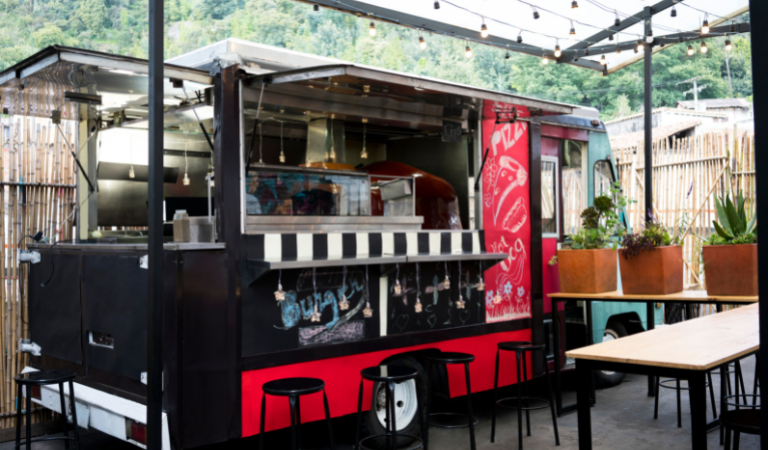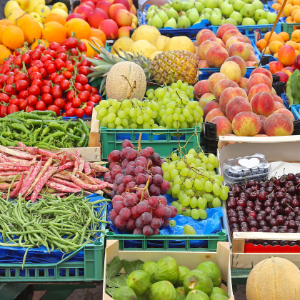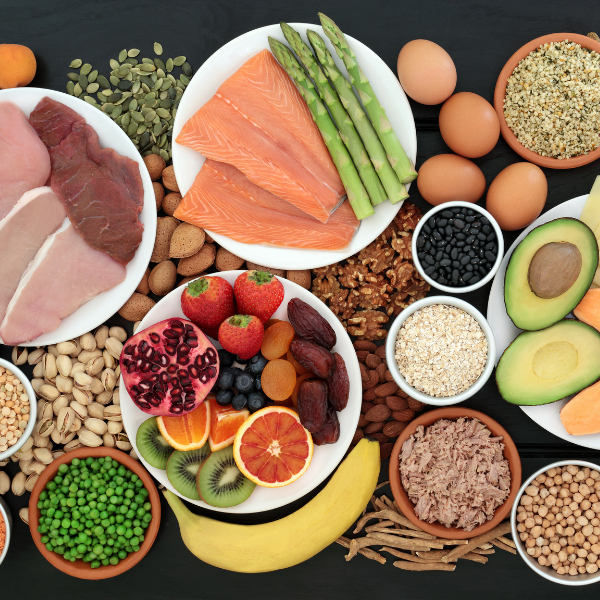With a huge emergence and continued growth in popularity, food trucks look like they’re here to stay. People enjoy the fast service and convenience food trucks offer: they are unique, and each food truck has a theme based on cuisine, decor, and aesthetic. However, there can be some negative results from a food truck. When done improperly, running a food truck can have some pretty harmful effects on the environment. In this how-to guide, we break down what those negative effects can be and how to avoid them.
How Do Food Trucks Harm The Environment?
While food trucks are fun and convenient, they also have the potential
to hurt the earth. Since most guests expect to get food to-go when
visiting a food truck, it can produce a lot of waste, which goes right
back into the earth. Food trucks also have the potential to increase
their carbon footprint by using too much energy or producing too much
waste. Additionally, because they are operating trucks, they can produce
large amounts of gasses into the atmosphere. While there are many ways
that food trucks can hurt the planet, there are ways to combat this and
reduce the impact they have. 
Eco-Friendly Food Truck Tips
There are plenty of ways to help reduce the harm your food truck does to the planet. Here are some tips to keep your food truck environmentally conscious.
Choose The Right Tableware
Because they operate as mobile eateries, food trucks primarily use
disposable tableware and flatware. While this can be a problem for the
environment, there are eco-friendly choices available. Instead of using
foam products that can harm the planet, consider opting for bamboo or
other
biodegradable products. If bamboo and wood products don’t fit well with the theme of your
food truck, there are also plastic tableware and flatware options you
can look into. Both of these alternatives are better for the environment
than a material such as foam because they take less time to break down
in the environment. If you want the most eco-friendly option and have
the space, you can offer customers a “dine-in” option. This would mean
you can have tables set up near your truck where guests can sit and
enjoy their meals with reusable tableware and flatware. This eliminates
a bulk of the disposable waste.

Reduce Energy Use
There are many ways you can reduce your energy use. One way to do so is by making sure your appliances are Energy Star approved. This may be costly at the beginning, but buying Energy Star approved equipment will be worth it in the long run. When conserving your energy use, your monthly utility bills go down in cost. You could also find more creative options to power your appliances. Clean energy is the best option, including solar and wind power. Solar energy may be easily accessible most days since food trucks operate outdoors.
Consider Other Fuel Options
Food trucks that run on gas can be detrimental to the environment. Big food trucks can get as low as five miles per gallon, which means they need a lot of fuel to travel and keep running for long periods of time. But, food trucks do have the option to run on biodiesel. Biodiesel is a fuel made from vegetable oil, animal fat, or other recycled greases. It uses resources that have been used in other ways, unlike gas, which is specifically made for vehicles. Using biodiesel is a great way to ensure your food truck isn’t using gas that can hurt the environment.
Serve Local Foods
Food trucks are usually owned and operated by local, small business owners. Sourcing ingredients from other local partners are more eco-friendly than purchasing food from corporate marketplaces, as it reduces transportation costs and effects. For example, meat or other products will be traveling a shorter distance. Specifically, this limits the carbon emissions from large 18-wheelers commonly used for commercial transport. Using local foods on your food truck’s menu also supports your local community. Doing so ensures that your community, and your food truck, are as sustainable as possible.
Use Seasonal Produce
Although it may not be an obvious way of being eco-conscious, using seasonal produce feeds into reducing your energy use. When customers ask farmers to grow fruits and vegetables outside their normal season, the farmers are forced to use energy to run greenhouses with adequate heat and light. This wastes energy unnecessarily and increases your carbon footprint.
When you opt for seasonal produce, your food truck would inherently be
more eco-friendly and your menu could inspire customers to do the same.
Going seasonal is also more economical because fruits and vegetables are
more affordable when they’re in season versus when they’re not. Eating
seasonal makes your food truck have more variety as the year goes on. It
can allow you to constantly update your menu to coincide with the
seasons, and customers will appreciate the variety and the chance to try
new things. The direct effect on customers’ experience as well as the
positive environmental impact will help you stand out against
competitors. 
Be Mindful Of Waste
Food trucks, like restaurants, are a huge source of unneeded waste. Whether the waste is consumer-produced or from your own kitchen, there are always ways to reduce garbage. Your establishment can do this by trying to use as much of your produce and other perishable ingredients as possible. This reduces the amount of food that needs to be thrown out at the end of the day.
You can also consider offering different portion sizes, so customers can choose to have a smaller plate of food. This helps prevent customers from throwing away excess food they leave behind because they’re too full. Another way to reduce waste can be by composting or donating leftover food from the day, if it’s still safe to eat. It can help your local community while also helping the environment.
Keep Up-To-Date With Your Vehicle’s Service
Servicing your truck routinely will help reduce the emissions it releases into the atmosphere. A bad engine can limit your fuel efficiency and require you to use more fuel than necessary. Therefore, keeping an eye on your “Service Engine” light is crucial. Food trucks are based around and depend on the truck itself, so it needs to be in the best condition possible to keep operations running smoothly and to reduce environmental harm.
Take Advantage Of Technology
Technology can be a great tool in taking extra steps to go green. Many businesses are using technology to help them go “paperless,” and food trucks can do the same. You can choose to offer paperless payment options, where customers pay, sign, and receive receipts through a tablet. This eliminates the need for paper receipts. It can also mean utilizing online platforms to advertise your truck, rather than flyers or paper business cards. This reduces the use of paper and helps your overall impact on our planet. Social media is the main marketing source nowadays and can help your business grow. You can utilize social media platforms to show pictures of your delicious food, provide links to GPS directions, offer discount codes, or announce giveaways. Utilizing technology is a simple, yet highly impactful way of being more eco-conscious.
Make Your Food Truck Eco-Friendly!
There are plenty of ways to keep your food truck exciting and inviting while also keeping in mind the impact it has on the environment. From choosing eco-friendly tableware and flatware options to conserving energy use, making your food truck more sustainable can be made easy. By practicing these eco-friendly tips, you can reduce your harm to the environment and create a positive impact.








